NCERT Solutions for Class 10 Geography Chapter 5 – Minerals and Energy Resources
NCERT Solutions for Class 10 Geography Chapter 5 – Minerals and Energy Resources are essential for understanding natural resource management in the CBSE curriculum. These well-structured answers help students grasp topics like classification of minerals, conventional and non-conventional energy resources, and conservation techniques. Designed as per the latest syllabus, these solutions strengthen conceptual clarity and improve exam preparation. Ideal for revision and practice, they foster environmental responsibility and resource awareness, making them a valuable study tool for scoring well in Class 10 Social Science exams.
NCERT Solutions For Class 10 Geography – Minerals and Energy Resources – Exercise Images
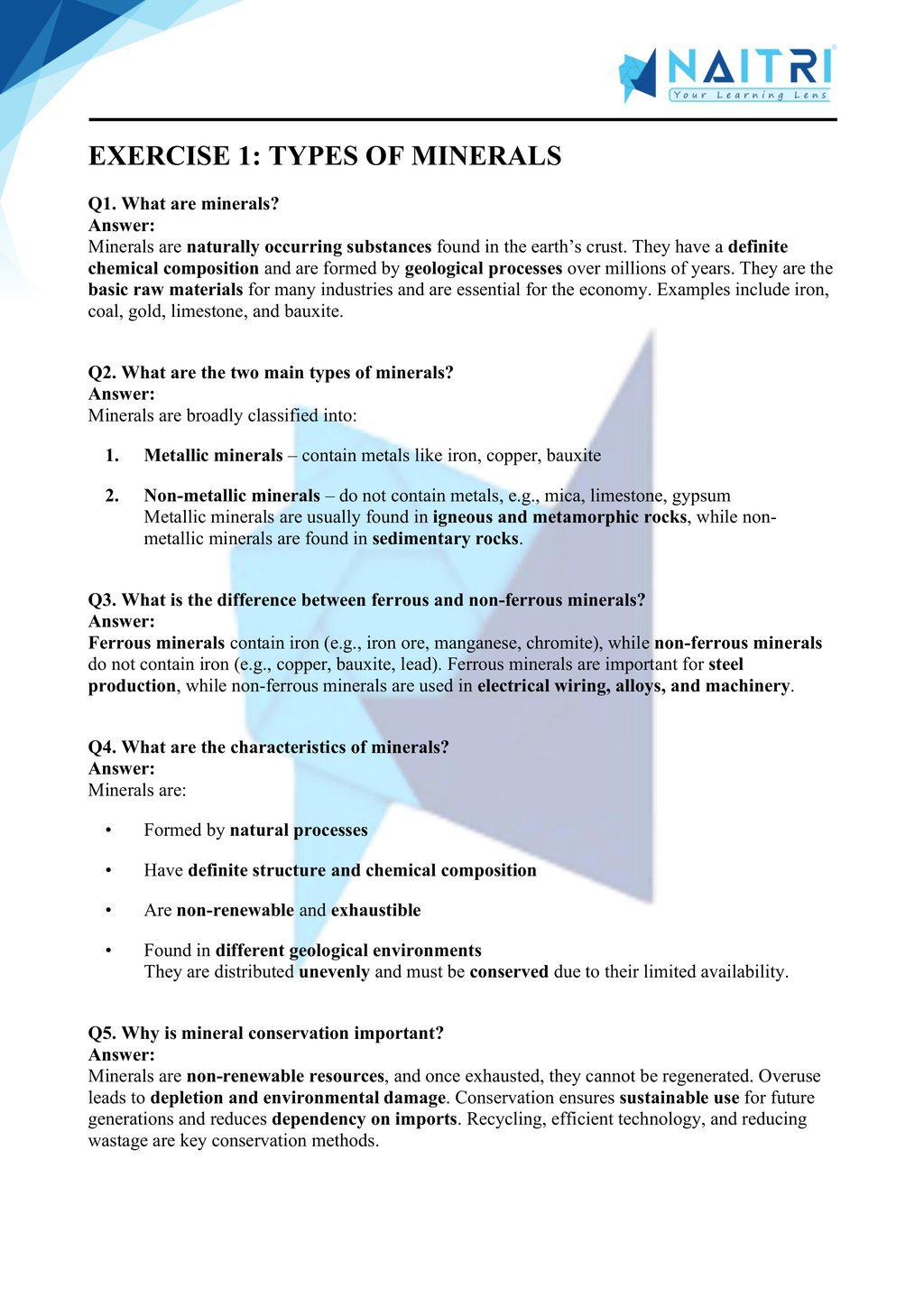
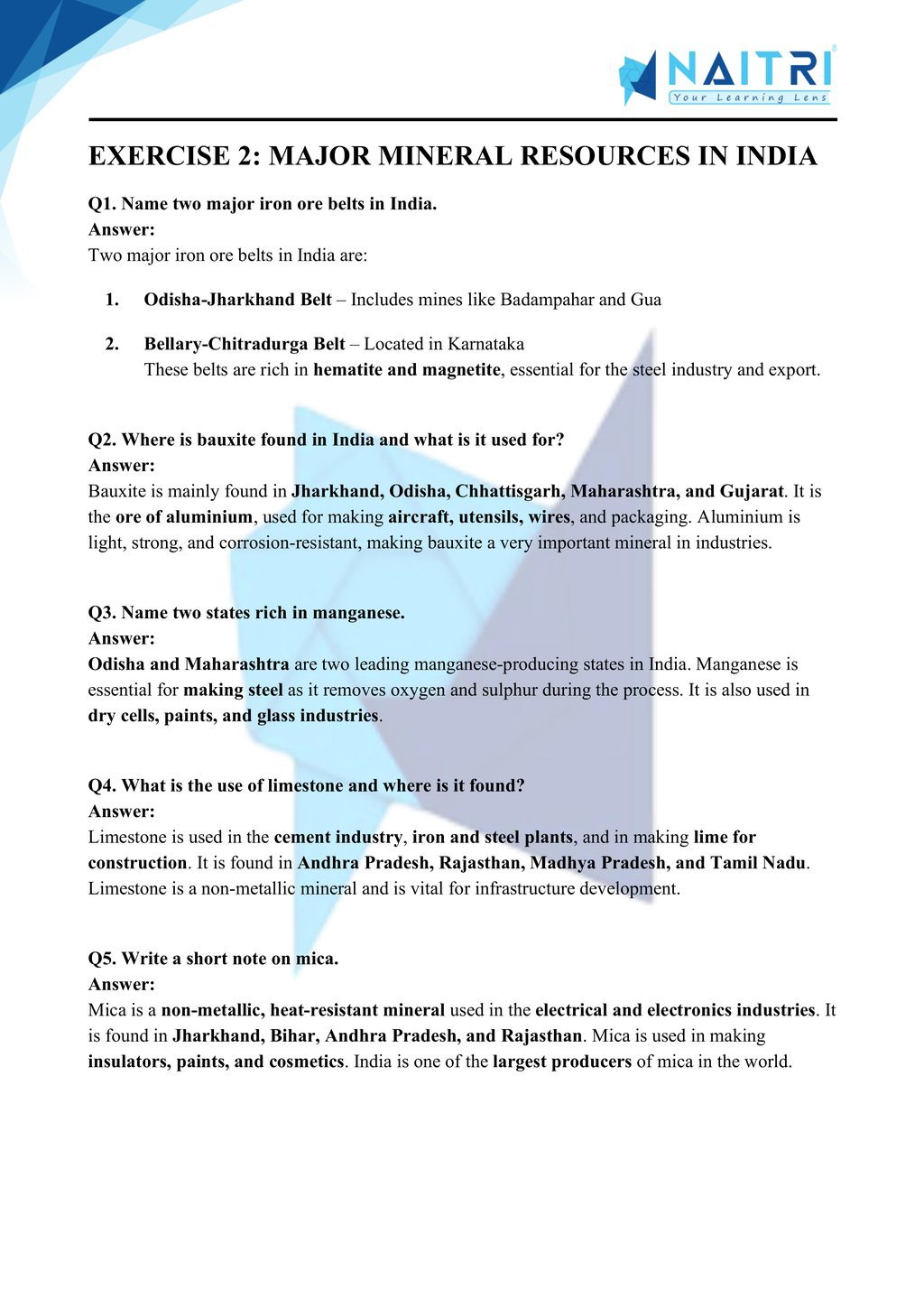
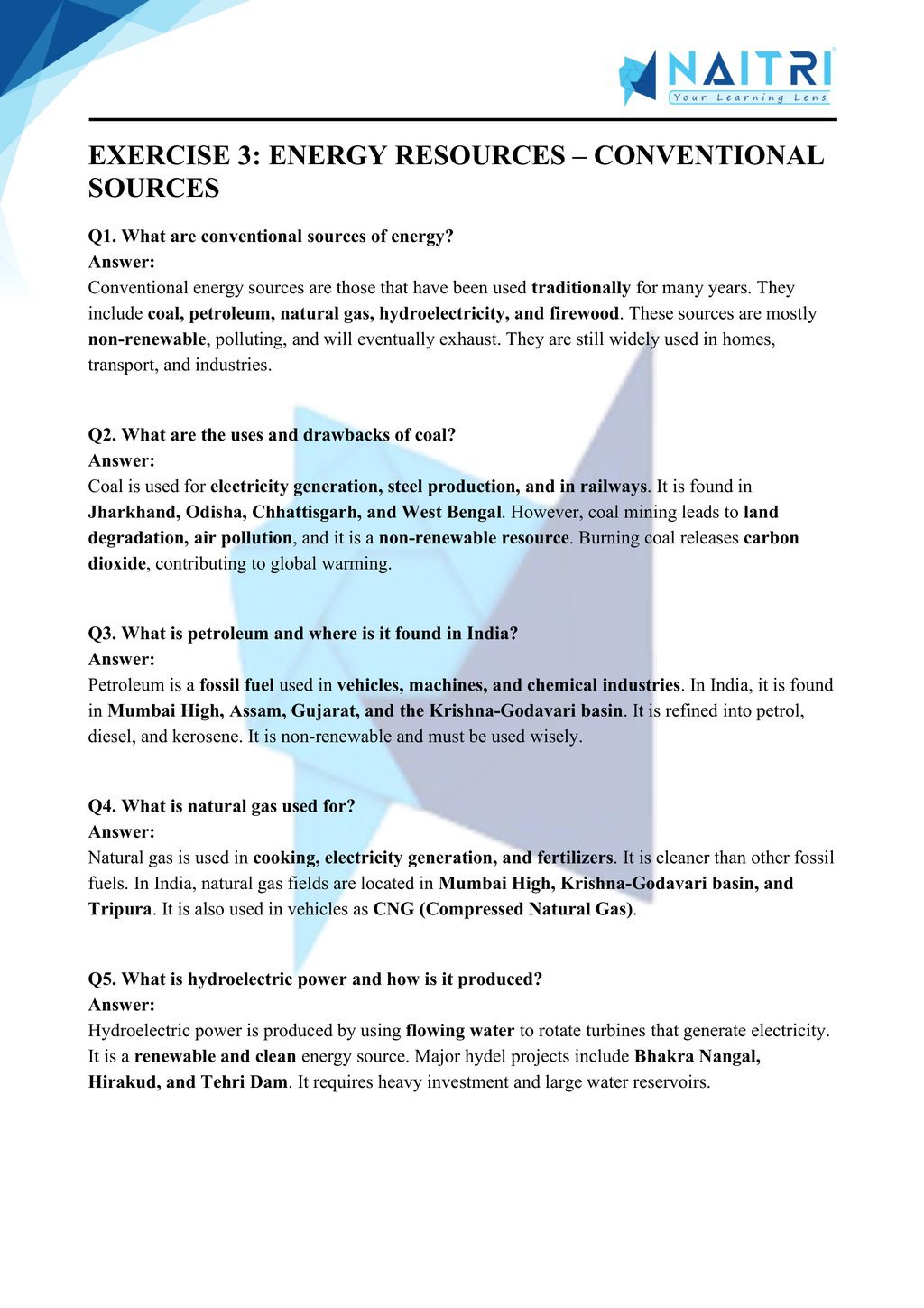
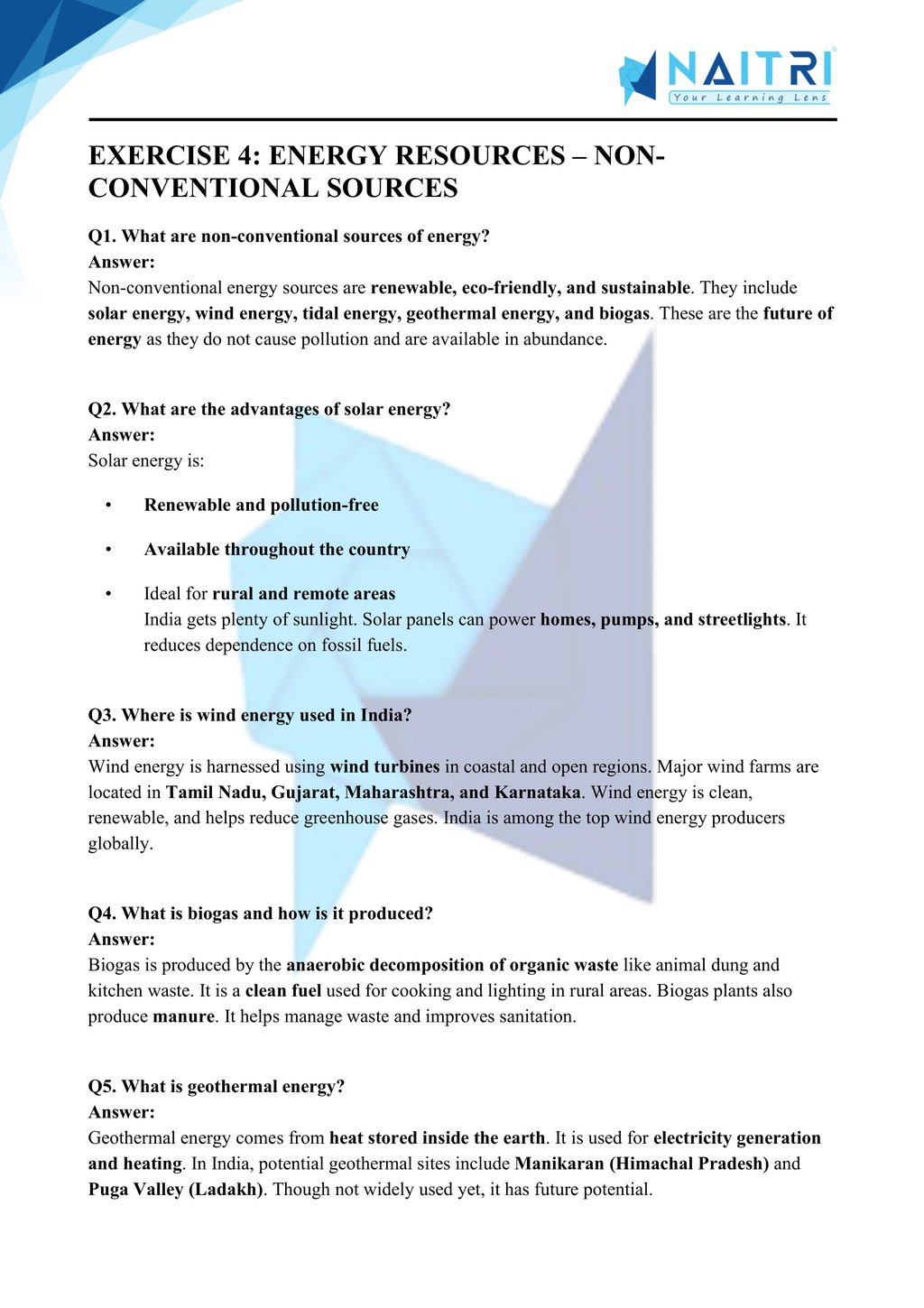
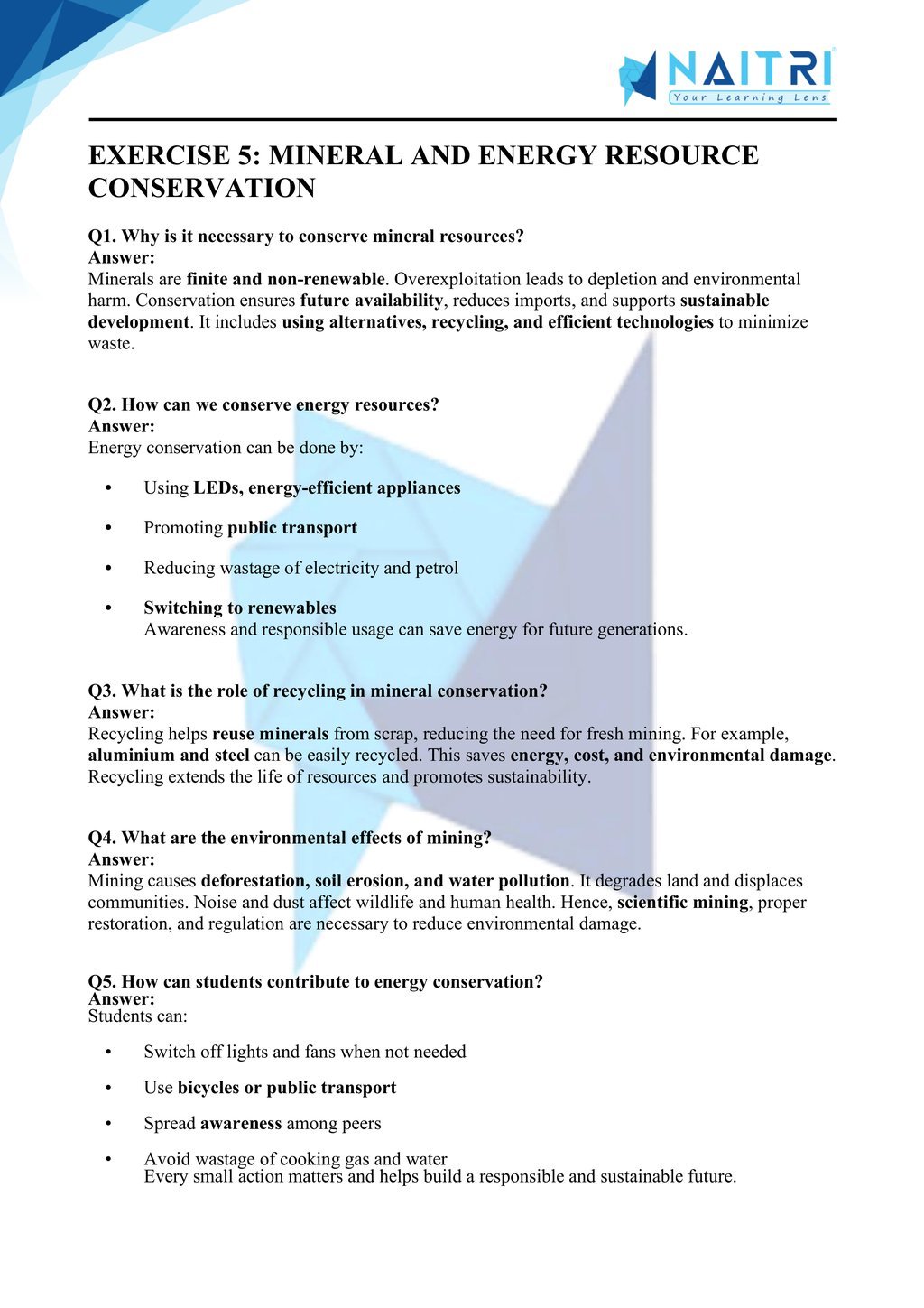
Experience Science Like Never Before – With AR!
Understanding Minerals and Energy Resources is now more exciting and immersive! With the NAITRI App, you can explore complex geography concepts through Augmented Reality (AR). See mines open, minerals extracted, and energy sources power the nation — right in front of you. Our AR-powered lessons make learning interactive, 3D, and fun, helping you retain concepts better and enjoy every topic.



Visualize . Interact . Understand . The future of learning is here
Minerals and Energy Resources – Important Questions with Answers
1. What are minerals?
Answer: Minerals are naturally occurring substances with a definite chemical composition and structure. They are found in the earth’s crust and are essential for industries.
2. How are minerals formed in nature?
Answer: Minerals are formed through various geological processes such as crystallization, evaporation, cooling of magma, and sedimentation over millions of years.
3. Classify minerals based on composition.
Answer:
Metallic minerals (e.g., iron, copper)
Non-metallic minerals (e.g., mica, limestone)
Energy minerals (e.g., coal, petroleum)
4. What is the difference between ferrous and non-ferrous minerals?
Answer:
Ferrous minerals contain iron (e.g., iron ore, manganese)
Non-ferrous minerals do not contain iron (e.g., copper, bauxite)
5. What are the major iron ore belts in India?
Answer:
Odisha-Jharkhand Belt
Durg-Bastar-Chandrapur Belt
Ballari-Chitradurga Belt
Maharashtra-Goa Belt
6. What is manganese used for?
Answer: Manganese is used in making steel and ferro-alloys, as well as in dry cell batteries, chemicals, and glass manufacturing.
7. Name two non-metallic minerals and their uses.
Answer:
Limestone: Used in cement industry
Mica: Used in electrical and electronic industries due to insulation properties
8. What are the uses of copper?
Answer: Copper is used in electrical wiring, electronics, coins, utensils, and machinery, due to its high conductivity and ductility.
9. Why is conservation of minerals necessary?
Answer: Minerals are non-renewable and take millions of years to form. Conservation ensures their sustainable use for future generations and prevents exhaustion.
10. How can we conserve minerals?
Answer: We can conserve minerals by using them efficiently, reducing waste, recycling, finding alternatives, and practicing sustainable mining.
11. What are energy resources?
Answer: Energy resources are sources that provide power or fuel for our needs like lighting, transport, industries, and domestic work. They are vital for development.
12. Differentiate between conventional and non-conventional energy.
Answer:
Conventional energy: Exhaustible (e.g., coal, petroleum)
Non-conventional energy: Renewable and eco-friendly (e.g., solar, wind)
13. What are fossil fuels?
Answer: Fossil fuels like coal, petroleum, and natural gas are formed from the remains of dead plants and animals buried under the earth for millions of years.
14. What is coal and what are its types?
Answer: Coal is a fossil fuel used mainly for electricity generation. Types include peat, lignite, bituminous, and anthracite, based on carbon content.
15. Why is petroleum called ‘liquid gold’?
Answer: Petroleum is called liquid gold because it is valuable, versatile, and used as a raw material in fuels, plastics, fertilizers, and various products.
16. What are the major petroleum producing areas in India?
Answer:
Mumbai High (offshore)
Assam (Digboi, Naharkatiya)
Gujarat (Ankleshwar, Kalol)
17. What is natural gas and how is it used?
Answer: Natural gas is a clean-burning fossil fuel used in power generation, cooking (CNG), fertilizers, and as fuel for vehicles and industries.
18. Why should we promote non-conventional sources of energy?
Answer: They are renewable, pollution-free, reduce dependence on imports, and are essential for sustainable development and climate protection.
19. What is solar energy and how is it used?
Answer: Solar energy is obtained from the sun’s rays and is used for cooking, heating, lighting, and electricity through solar panels and cookers.
20. What are the advantages of wind energy?
Answer: Wind energy is renewable, eco-friendly, and ideal for electricity generation in windy areas. It reduces carbon emissions and is cost-effective in the long run.
21. Mention two advantages of biogas.
Answer:
Provides clean and cheap fuel for cooking
Produces organic manure as a by-product for farms
22. What is geothermal energy?
Answer: Geothermal energy is heat derived from hot springs or earth’s interior, used for electricity generation and heating in volcanic regions.
23. Where is nuclear energy produced in India?
Answer: Nuclear energy is generated from uranium and thorium at plants in Tarapur, Kalpakkam, Narora, Rawatbhata, and Kudankulam.
24. What is tidal energy?
Answer: Tidal energy is produced by harnessing ocean tides using turbines. It is a non-polluting renewable source, ideal for coastal areas.
25. How can individuals help conserve energy resources?
Answer:
Use energy-efficient appliances
Switch off lights when not needed
Promote public transport
Install solar panels and rainwater harvesting
Minerals and Energy Resources introduces students to India’s vast mineral wealth and its categorization (metallic, non-metallic, and energy minerals). The chapter covers conventional (coal, petroleum) and non-conventional (solar, wind, nuclear) energy resources. Students learn about the need for conservation, responsible mining practices, and the shift toward renewable sources for future energy security.
Download Naitri App
Easy, Visual Learning — Right on Your Phone
Learn with Augmented Reality! The Naitri app makes CBSE and MP Board concepts interactive and fun — even in low-resource settings. Watch lessons, complete homework, take tests, and track progress — all in one place. Anytime. Anywhere.
Available on








